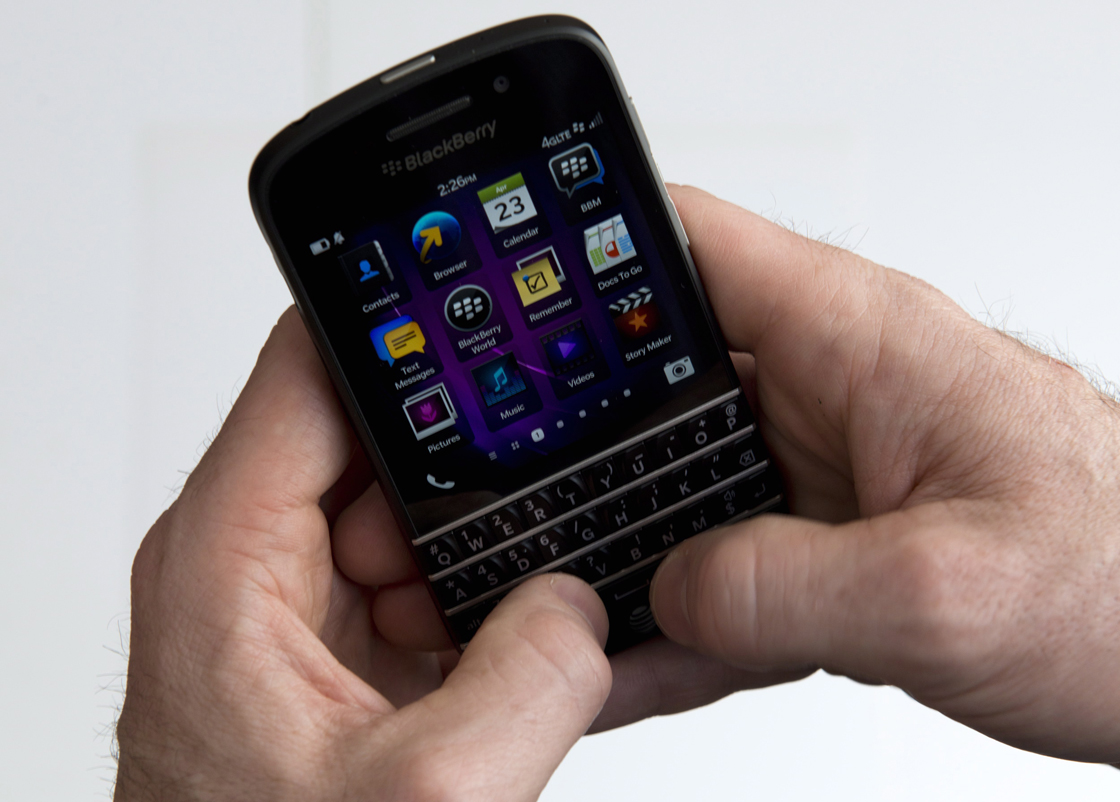TORONTO – For the BlackBerry loyalists who hoped the beleaguered company could redeem itself with another top-notch keyboard-based smartphone, there’s good news: the Q10 doesn’t disappoint.

It won’t necessarily impress the early-adopter consumers who obsess over the specs of cutting-edge mobile devices, but those who wistfully recall the glory days of the BlackBerry and reluctantly moved on to other mobile platforms will likely be very happy with the Q10.
BlackBerry announced Tuesday that the Q10 will be available starting May 1 on Rogers Wireless, Bell Mobility and Telus for $199 with a three-year contract.
Most buyers who have been waiting for news about the Q10 really care about only one thing: the keyboard. And it performs exactly as expected, making it easy to quickly crank out long emails with minimal frustration.
BlackBerry says the keys on the Q10 are the largest they’ve ever used and each row of the QWERTY keyboard is separated by a thick fret, which is supposed to help improve typing accuracy.
Read More: BlackBerry Q10 smartphone to hit stores May 1
The backlit keyboard is definitely satisfying to use and BlackBerry addicts will find it takes no time at all to get accustomed to it. There’s also an option to turn on a predictive text feature, which anticipates what you’re typing and displays shortcuts for three words it thinks you might be working towards. Swiping up or clicking on one of the shortcuts auto-completes the word and saves a few keystrokes.
The trade-off for integrating a keyboard into the Q10 is a smaller screen. Users who have marvelled at the large displays on recent Google Android devices may find the Q10’s tiny.

Get daily National news
The square screen measures 3.1 inches diagonally, compared to the 4.2-inch rectangular screen on the BlackBerry Z10. The iPhone 5 has a four-inch screen while the new Samsung Galaxy S4 has a five-inch display. The screen on the Q10 isn’t too small from a usability perspective but it does mean a lot more scrolling on websites, and watching video isn’t quite as satisfying as on a larger phone.
When landing on a text-heavy page that’s a little hard to read without zooming in — for example a news article or Wikipedia page — users can engage the Reader feature, which strips out all the graphics, photos and page layout and simply displays the main text in a large readable font.
That feature is part of the new BlackBerry 10 mobile operating system, which debuted on the Z10. Those who have tried the touchscreen Z10 will find the Q10 feels very familiar. Those who haven’t yet experienced BlackBerry 10 may be a bit mystified at first by the swipe gestures the operating system relies on. There’s no Back button with the new BlackBerrys. Instead, users learn a swipe motion to get back to the home screen. Once users get the hang of the gestures it’s easy to multi-task (up to eight apps can be run simultaneously) and quickly zip in and out programs.
Another key feature of BlackBerry 10 that keyboard aficionados will appreciate is the Hub, a consolidated inbox that manages messages from work and personal email accounts and social networks. Users who once had to check for new messages at a number of different websites can get notifications in one place with the Hub. And replying to any of those messages is seamlessly done within the Hub without having to wait for another app to load.
Users still carrying an old BlackBerry will be relieved to know that the Q10’s web browser is finally up to the task of handling pretty much any website it encounters and can even load Flash content (although it is turned off by default).
The Q10’s battery life isn’t as good as BlackBerry was known for back in the good ol’ days but it easily survives through a typical workday without shutting itself down. Users who are constantly on the phone all day can buy an extra battery, which is expected to sell for about $35.
As with the Z10, the woeful app selection in the BlackBerry World marketplace is one of the biggest knocks against the Q10. Because the devices don’t share the same screen size, apps designed for the Z10 aren’t automatically ready to use on the Q10 and have to be reformatted by developers. Many already have their apps ready for the Q10 but as of now, there’s even less selection available for the latest BlackBerry. That may not bother users who have been waiting for the Q10 and see their smartphone as a communication tool first and foremost. But others who enjoy regularly downloading new games and apps will be disappointed by what’s available for the Q10.
BlackBerry users who refused to hand over their keyboard devices even while enduring endless frustration with their aging phones, and jealously watched iPhone and Android users have fun with theirs, will want to start plotting an upgrade to the Q10.
Even Google’s executive chairman Eric Schmidt has admitted to being a devoted BlackBerry user.
Don’t be surprised if he’s seen soon with the Q10.







Comments